Peer-reviewed articles
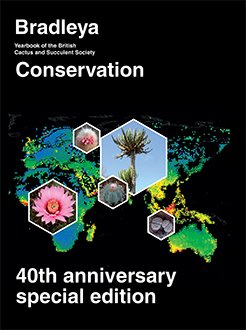
Abstract
In this article we review the literature, with a focus on cacti, about the role of cultivation in conservation. We examine in detail the case study of Lophophora williamsii, the peyote cactus, and present arguments that cultivation is not only a necessary conservation strategy for this particular species but is likely the only viable alternative for long-term survival of this cactus in the wild. Concerns about cultivation, as well as recommendations and conservation implications are also discussed.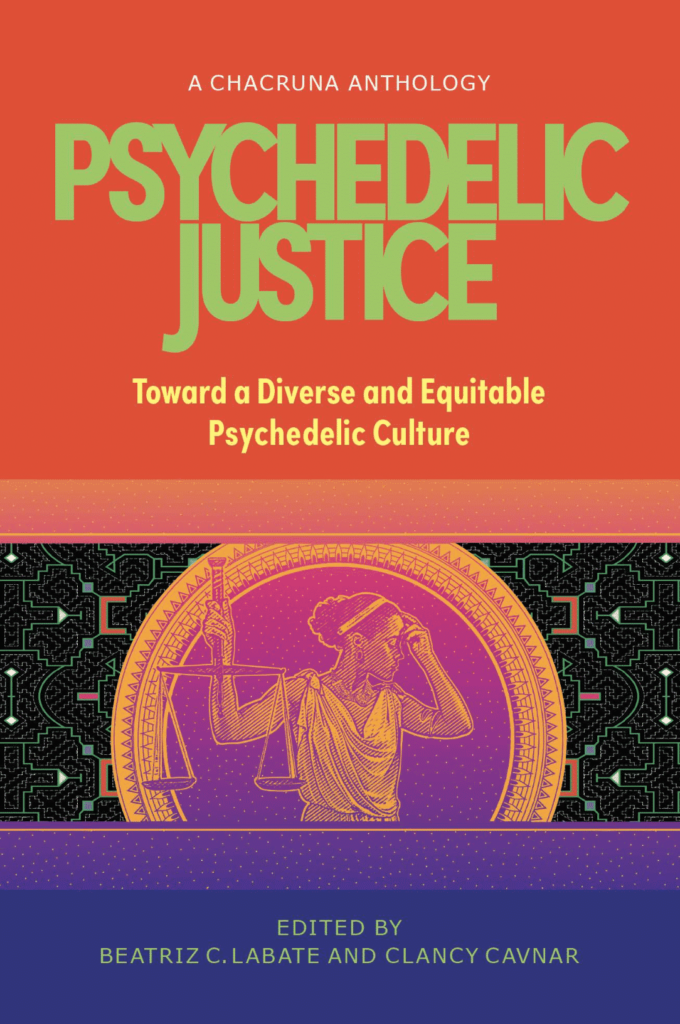
Book chapter
A Word in Edgewise About the Sustainability of Peyote.
Anna Ermakova and Martin Terry.
Psychedelic Justice: Toward a Diverse and Equitable Psychedelic Culture (2021): Section 6, pp. 181-186.
Editors: Beatriz Caiuby Labate, Clancy Cavnar
Publisher: Synergetic Press, September 2021
ISBN: 0907791859, 9780907791850
PDF ISBNOur chapter
Our chapter is available on Chacruna website.
Book description
Essays on the history of psychedelics, the present renaissance, and visions for an inclusive and equitable future.
As psychedelics and psychedelic-assisted therapies explode into the popular consciousness, what does it mean to cultivate and embody a psychedelic renaissance that learns from the past and prepares for the future?
From cultural appropriation and sustainability to diversity, inclusion and venture capitalism, Psychedelic Justice: Toward a Diverse and Equitable Psychedelic Culture examines the history of psychedelics, celebrates its present moment and contemplates how advocates and policymakers can shape the future integration of psychedelics into general society.
An anthology of essays written for the Chacruna Institute and edited by its co-founders Bia Labate, Ph.d, and Clancy Cavnar, Psy.D, Psychedelic Justice highlights the need for an inclusionary, societal-level approach to the psychedelic renaissance. In addition to psychedelics and drug policy, works in this book examine psychedelics in the contexts of capitalism, Indigenous traditions, reciprocity, sustainability, mental health, diversity, sex, power, and more.
“Labate and Cavnar have done it again: an excellent, timely anthology that addresses crucial issues in the psychedelic community of social equity, the globalization of psychedelic substances and culture, and our shared responsibility to prevent the extinction of these plants and animals.” ─Julie Holland, MD author, Good Chemistry: The Science of Connection, from Soul to Psychedelics. (Harper Wave, 2020)
“Psychedelic Justice is an inspiring and important collection of essays that ask the hard questions the psychedelic community needs to grapple with to move forward with integrity.” ─Michelle Janikian, author of Your Psilocybin Mushroom Companion
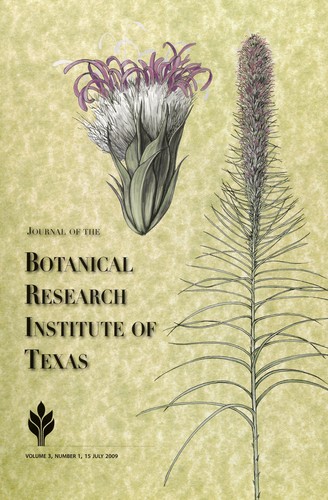
Abstract
Lophophora williamsii (Cactaceae) is thought to be threatened by habitat loss and overharvesting. However, basic demographic and habitat information to evaluate its conservation status has been lacking. We surveyed six wild populations of this species, three in South Texas and three in West Texas, to begin to address this gap. We found high levels of heterogeneity in plant presence and density at multiple spatial scales. While plant densities were not consistently different between South and West Texas, plants were significantly larger in West Texas. The two regions differ strongly in precipitation, temperature, elevation, and topography, all of which are correlated at the regional scale. Therefore, it was not possible to identify which of these variables, or other factors such as competition and human harvesting, may be responsible for the regional differences in plant size. However, our results provide initial information for determining the conservation status of this species.
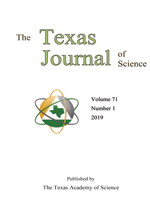
Full text
All living things, including humans, exist in complex interdependent relationships known as ecosystems. Destruction and degradation of natural ecosystems are the primary causes of declines in biodiversity, the key indicator of ecosystem health (Haddad et al. 2015). Healthy ecosystems provide many crucial services: they clean the water, purify the air, regulate the climate, maintain soils, recycle nutrients, and provide us with raw materials and resources for medicines, fuel, fiber, and food. The controversy regarding the construction of a physical barrier along the U.S.-Mexico border has highlighted important scientific factors related to biodiversity that should be considered in order to inform and affect the construction — or abstention from construction — of a barrier along the U.S.-Mexico border intended to deter human immigration. Texas has more at stake in this debate than any other state in the U.S. due, in part, to the physical-geographic fact that Texas comprises over two-thirds (2018 km/1254 mi) of the total U.S.-Mexico border length (3145 km/1954 mi) and encompasses the largest remaining unspoiled area of the borderlands, the Trans-Pecos portion of the Chihuahuan Desert.
Scientific concern about the management and ecology of U.S.-Mexico borderlands is increasing. Prior to 2007, concern over border security focused on illegal immigration and drug smuggling with little attention given to conservation and wildlife (Cohn 2007). Over the past decade, scientists have called for more research and consideration regarding environmental effects upon borderland biodiversity (e.g., Liu et al. 2019). Three ways in which border infrastructure and security operations threaten biodiversity are (1) construction activity bypassing environmental laws, (2) degradation, fragmentation, and elimination of habitat, and (3) devaluation of bi-governmental conservation investments and scientific research (Peters et al. 2018). Two of the six ecoregions bisected by the U.S.-Mexico border are in Texas: the Trans-Pecos and the Tamaulipan thornscrub. Fowler et al. (2018) recently expressed environmental concern over threats to Texas biodiversity through a scientific literature review of 14 publications focusing on examples of habitat fragmentation and ecosystem damage in the Tamaulipan thornscrub. The Trans-Pecos represents some of the last remaining unspoiled ecosystems in the U.S.-Mexico borderlands. From a scientific point of view, key environmental issues associated with the construction of a U.S.-Mexico border barrier that should be considered include physical area requirements, land-use change effects on hydrology and habitat fragmentation, and altered ecology of soils, vegetation, and wildlife. Additionally, all of these environmental issues will negatively influence future generations of people inhabiting the area.
The land area required to construct a U.S.-Mexico border barrier is significant. A cleared swath roughly 12–20 m (39–66 ft) wide, equivalent to four or five highway lanes, would be physically occupied and irreversibly altered. However, in addition to land clearing for the physical barrier itself, an estimated additional 12–20 ha, per km of barrier, will be required for construction staging and access roads (USDHS et al. 2008). Considering that the Texas-Mexico border stretches 2018 km (1254 mi), the potential land-use requirement for barrier infrastructure amounts to 443 km2 (171 mi2). Ecological edge effects further magnify the total amount of natural habitat that could ultimately be affected. The clearing of linear tracts (i.e., road corridors) penetrating into previously undisturbed areas decreases the interior habitat size and renders local plants and animals more exposed and vulnerable. This latter phenomenon gives rise to habitat fragmentation, complete separation of formerly connected areas, which in turn leaves isolated populations susceptible to inbreeding. Eventually species extirpation (i.e., removal, destruction, extermination) may result, and in worst case scenarios, species extinction may occur (Haddad et al. 2015).
Land-use change, caused by physical barriers (i.e., fences) and supporting road networks, presents a significant concern as it negatively affects habitat and associated regional ecology through reduced biodiversity (Forman & Alexander 1998; Trombulak & Frissell 2000). Roads bisect the landscape, fragmenting habitat and degrading ecosystems. Seven general effects of roads were identified by Trombulak & Frissell (2000): mortalities caused by both road construction and collisions with vehicles, alterations of both the physical and chemical environments, changes in animal behavior, increased spread of exotic species, and increased human land use. Epps et al. (2005) demonstrated reduced connectivity and genetic diversity in desert bighorn sheep populations due to roads and fences in the Mojave and Sonoran Desert regions of California. Roads and barriers reroute natural drainage patterns that further alter the landscape through sediment erosion, entrainment, and deposition processes (Montgomery 1994). Land-use changes driven by human activities have been shown to reduce microbial and faunal abundance and the overall diversity of soil organisms (Rocca et al. 2019). Reduced biodiversity in soils may impair numerous ecosystem functions, such as nutrient acquisition by plants and the cycling of resources between above- and below-ground communities (Wagg et al. 2014). High levels of suspended sediment in streams and springs resulting from expanded roadways and illegal traffic in borderland areas have been shown to negatively affect fish populations in southern Arizona (Barkalow & Bonar 2015). Limiting and strategically locating road expansion may be the most cost-effective and straightforward way to achieve biodiversity and sustainability goals (Laurance et al. 2014; Ibisch et al. 2016).
Fences are used to protect and manage resources, delineate land ownership, and define political boundaries but at the cost of accelerated ecosystem fragmentation. Even fences designed for positive benefits (i.e., conservation fencing) may have negative consequences for others (i.e., limit movement) (Jakes et al. 2018). For example, along the U.S.-Mexico border human migration and drug smuggling causes habitat degradation and pollution as people traveling through remote areas create trails, produce human waste, and discard used supplies (e.g., USGAO 2004; ADEQ 2019). Fences may reduce human traffic and their associated impacts on the environment (Schieffelin 2012). However, the wall may worsen rather than improve vehicular traffic, even after its initial construction. Government vehicles travel over roads and trails in these areas, both for patrolling and to install and maintain fences, walls, and surveillance equipment. Smugglers may be displaced into more remote and relatively pristine areas. Whether a fence is a useful management tool or a problem for ecosystem conservation depends upon the point of view. Solutions based on ecological concepts and empirical data must find balance between social needs and natural ecosystem conservation (Jakes et al. 2018).
Since accelerated construction began in the 1990's, border fence infrastructure has been shown to amplify runoff and exacerbate flooding (Norman et al. 2010; Sorrensen 2012). Fences and grated channels, when clogged with runoff debris, act as temporary dams which back up and channelize flood waters. At least half a dozen incidents have occurred at fenced portions of the U.S.-Mexico border since 2006, causing millions of dollars in damage and loss of human life (Sadasivam 2018). Additional infrastructure is likely to have similar outcomes through hydrological and hydraulic changes unless environmentally conscious strategies are applied (Granados-Olivas et al. 2016; Walsh et al. 2016). Flooding effects are not limited to human-related impacts. Flood-altered landscapes in South Texas have been shown to directly contribute to the decline of wild turkey (Perotto-Baldivieso et al. 2011) and case studies suggest numerous species may be significantly affected by border security fences, supporting infrastructure, and artificial lighting (Flesch et al. 2010).
Much of South Texas is occupied by a collection of plants and animals that collectively comprise an ecological zone known as the Tamaulipan thornscrub. As the name implies, this ecoregion stretches from far South Texas east across the Rio Grande/Río Bravo and south through much of the Mexican state of Tamaulipas. It is home to numerous endangered animal and plant species including the ocelot, several migratory birds, the star cactus, the Zapata bladderpod, and Walker's manihot. Ninety-five percent of the native Tamaulipan thornscrub has already disappeared over the last century due to economic development that follows the bulldozing or root-plowing of native vegetation (Schlyer 2018). Construction of a U.S.-Mexico physical barrier would constitute one more destructive action reducing the remaining Tamaulipan thornscrub habitat.
A similarly diverse and relatively pristine ecosystem in Texas is the Trans-Pecos, the portion of the state lying west of the Pecos River. This complex area contains a variety of vegetation and animal communities spread across diverse habitats from desert flats to mountain slopes. Although the amount of economic development in West Texas is miniscule compared to South Texas, the potential for irreversible damage to the ecoregion as a result of a physical border barrier and supporting road network is just as significant. One example is the possibility that the proposed barrier would run through Big Bend National Park between the Chisos Mountains and the Rio Grande. The result could negatively affect the park's population of black bears by cutting them off from larger populations in Mexico. Restricted gene flow would lead to inbreeding and adverse genetic effects (Lasky et al. 2011). This phenomenon was recently described in populations of the Western Diamondback Rattlesnake (Crotalus atrox) divided by an interstate highway (Herrmann et al. 2017). Roadway-induced loss of genetic diversity in this species of rattlesnake found across the desert southwest suggests that more sensitive and threatened or endangered species may also be at risk.
There is concern about barrier construction projects being exempt from environmental review requirements (US Public Law 109-13, Section 102c). This is particularly troubling because much of the land along the border in South and West Texas is federally owned. Activities have already begun in preparation for the partial destruction of the Mission Texas Butterfly Sanctuary, a key stopover point the Monarch butterfly uses during its ~3200 km (~2000 mi) annual migration. There are several other parks/sanctuaries that could be affected including Bentsen-Rio Grande Valley State Park, Resaca de la Palma State Park, and Santa Ana National Wildlife Refuge. These areas are integral to our state and national heritage and as such, should be preserved from a societal point of view as well as for ecological reasons. The Texas Academy of Science echoes those suggestions proposed by Fowler et al. (2018) for any proposed border construction projects: (a) conducting an appropriate environmental review for each proposed barrier section, even if it is not required, (b) limiting the extent of physical barriers and associated roads, (c) designing barriers in such a way as to permit animal passage, and (d) substituting less biologically harmful devices, such as electronic sensors, for physical barriers.
There are many well-founded, science-based concerns about the negative ecological impacts of physical barriers and associated disturbances on the U.S.-Mexico border. We should not lose sight of the fact that the impacts of the proposed physical barrier on the landscape and its ecology are irreversible. Once inflicted, they cannot be undone – nature will either find a way to adapt – almost certainly in reduced numbers and quality – or perish. The final result will affect humanity on both sides of the border.
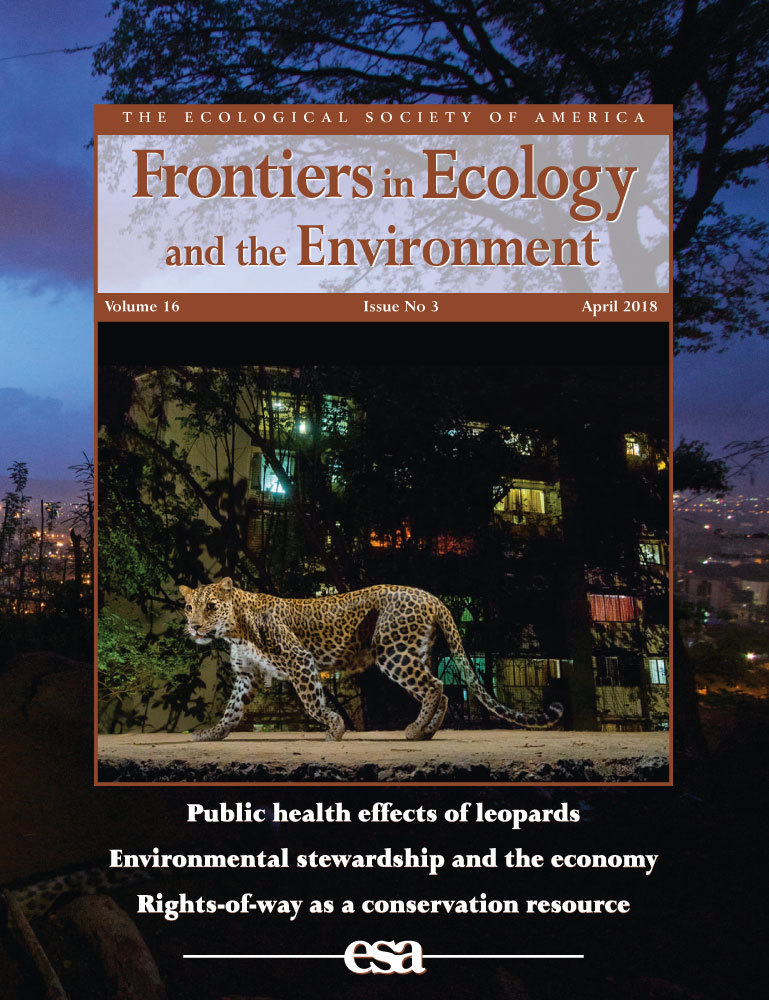
Abstract
We evaluated the pharmacological consequences of tissues other than crown being included with harvested peyote. Mean mescaline concentrations were determined for crown, non-chlorophyllous stem, and root, using mature individuals from the same population in South Texas. Samples of each tissue—crown, non-chlorophyllous stem, and root—were taken from each of 13 individual plants. Samples were dried, triturated, defatted, and extracted with methylene chloride, using an acid-base aqueous wash to recover the alkaloids. The concentration of mescaline in each sample was determined by HPLC. The average mescaline concentration in non-chlorophyllous stem was an order of magnitude lower than that in crown, whereas the mescaline concentration in root was two orders of magnitude lower than that in crown. These results show that non-chlorophyllous stem is a poor source of mescaline, and root is an extremely poor source. These results have important implications for conservation, suggesting that non-traditional harvesting of peyote for religious or medicinal use involving the cutting of non-chlorophyllous tissue are contributing to the death of plants and the subsequent failure to regenerate new crowns. Therefore, this practice should be reevaluated by peyote harvesters and users.
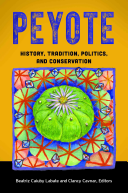
Abstract for our chapter
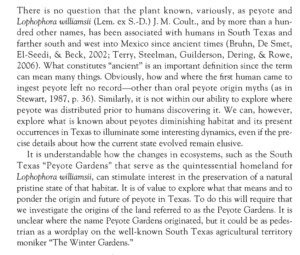
A number of errors were introduced into our chapter after both the authors and the editors had performed final proofing. It is otherwise a beautiful and interesting book.
[PDF of the problems that we have noticed in our hardcopy.]
Book description
This book explains the role that peyote—a hallucinogenic cactus—plays in the religious and spiritual fulfillment of certain peoples in the United States and Mexico, and examines pressing issues concerning the regulation and conservation of peyote as well as issues of indigenous and religious rights.
Why is mescaline—an internationally controlled substance derived from peyote—given exemptions for religious use by indigenous groups in Mexico, and by the pan-indigenous Native American Church in the United States and Canada? What are the intersections of peyote use, constitutional law, and religious freedom? And why are natural populations of peyote in decline—so much so that in Mexico, peyote is considered a species needing "special protection"? This fascinating book addresses these questions and many more. It also examines the delicate relationship between "the needs of the plant" as a species and "the needs of man" to consume the species for spiritual purposes.
The authors of this work integrate the history of peyote regulation in the United States and the special "trust responsibility" relationship between the American Indians and the government into their broad examination of peyote, a hallucinogenic cactus containing mescaline that grows naturally in Mexico and southern Texas. The book's chapters document how when it comes to peyote, multiple stakeholders' interests are in conflict—as is often the case with issues that involve ethnic identity, religion, constitutional interpretation, and conservation. The expansion of peyote traditions also serves as a foundation for examining issues of international human rights law and protections for religious freedom within the global milieu of cultural transnationalism.
Features
- Explains the complete history of the peyote plant in the United States, presenting views from religions including Native American and Christian churches, the creation and evolution of U.S. law regarding peyote, state and federal legal protections since 1990, reasons for the plant's apparent demise, and arguments for its stronger protection
- Identifies current peyote protective laws in Mexico and Canada
- Documents how many U.S. residents, including Native Americans, commonly use peyote as a spirituality enhancer or illegal recreational drug within the United States, or do so as tourists when visiting Mexico
